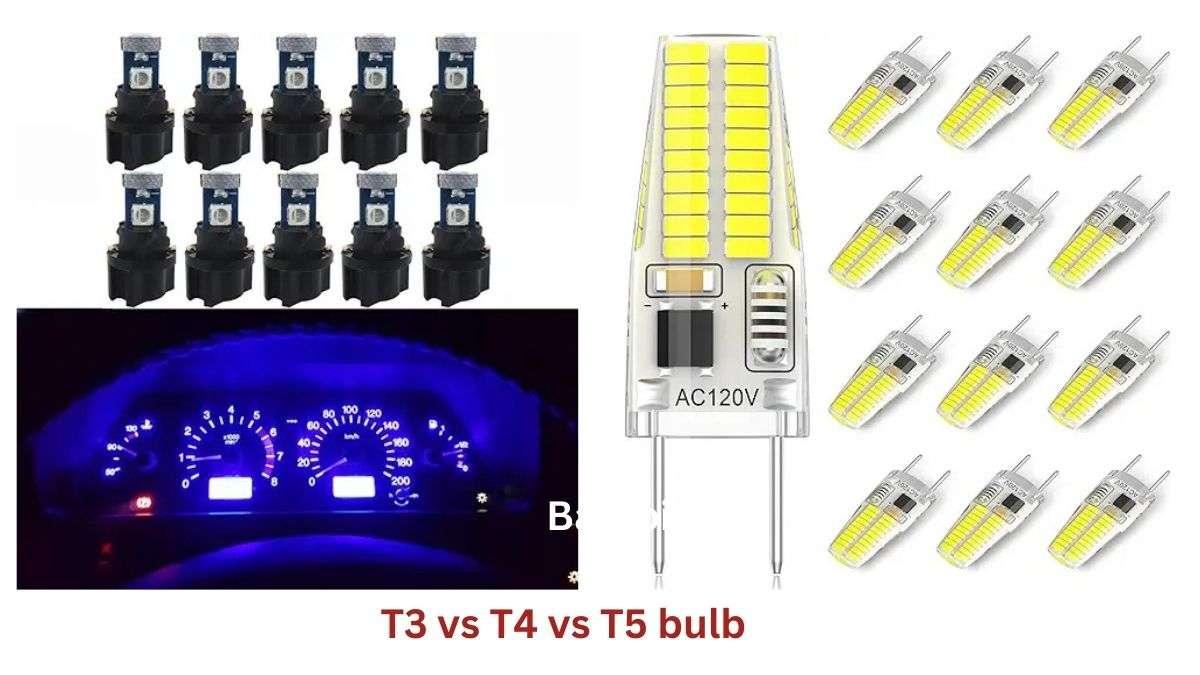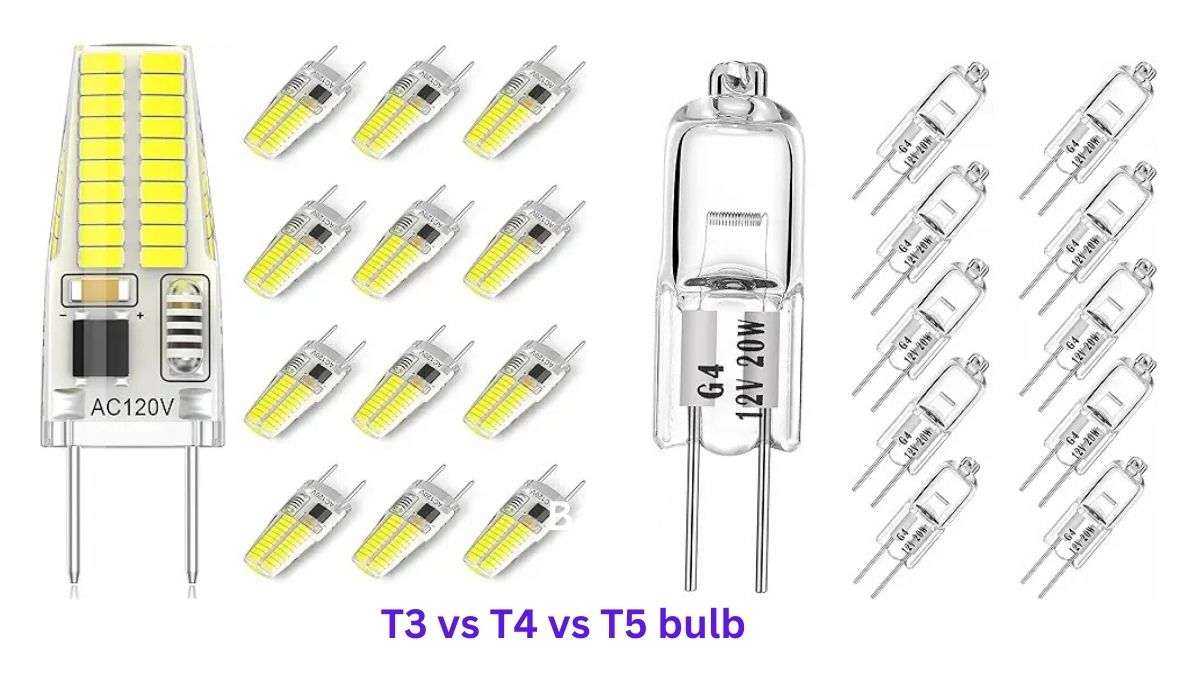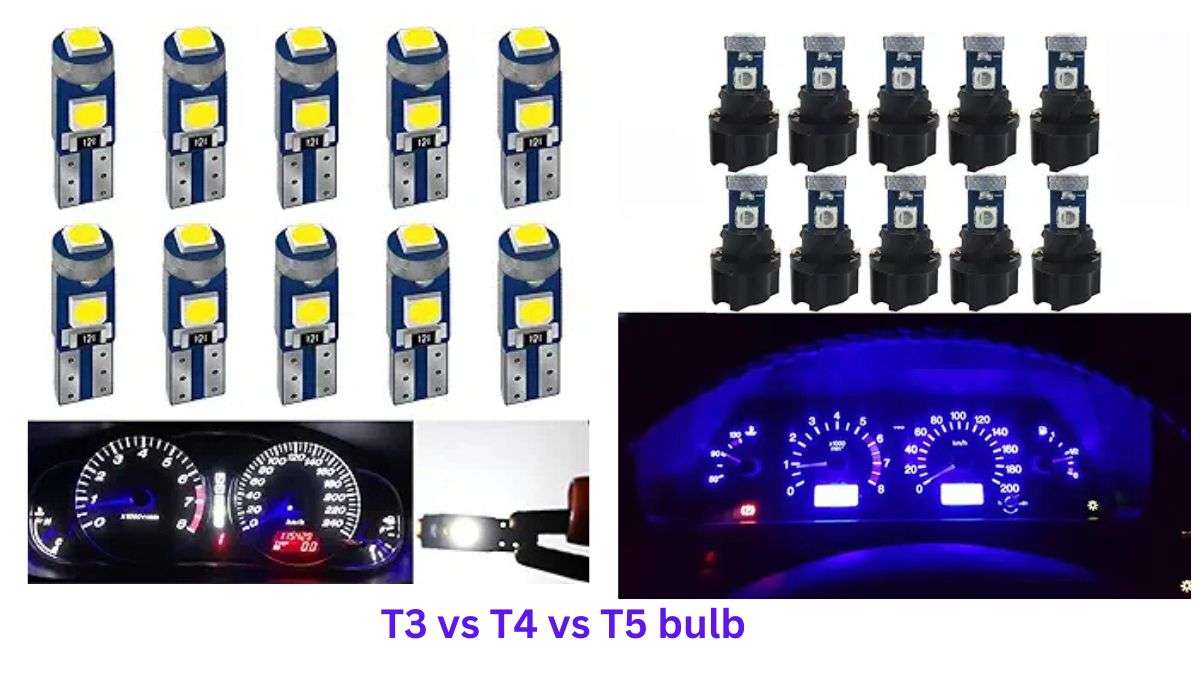Did you know that upgrading your lighting can have a significant impact on energy savings? For instance, switching from older T12 bulbs to modern T5 fluorescent lighting can reduce energy consumption by up to 45%! That benefits the environment as well as your pocketbook. However, with so many T-series bulbs on the market—like T3 vs T4 vs T5 bulb—many people find it hard to choose the right one. As a lighting specialist, We’ve seen the confusion these bulbs can cause. If you’re looking to brighten up your space and optimize energy efficiency, understanding the distinctions between T3, T4, and T5 bulbs is crucial. Let’s dive into the specifics and make sense of these lighting options so you can make an informed choice.
Understanding T-Series Bulb Basics
i). Definition of T-Rating and What the Numbers Mean
In the world of fluorescent lighting, the “T” in T-series bulbs stands for “tubular,” indicating the shape of these bulbs. The number following the “T” represents the diameter in eighths of an inch. For instance, a T5 bulb is 5/8 of an inch in diameter, while a T3 is only 3/8 of an inch. These sizes influence where and how each type of bulb can be used.
ii). Historical Evolution from T12 to Modern T5 Bulbs
The T-series journey began with the larger T12 bulbs, which were the first standard fluorescent tubes. Over time, technology advanced to develop smaller, more efficient bulbs—like the T8 and eventually the highly efficient T5, known for its compact size and superior energy savings.
iii). Basic Components of Fluorescent Tubes
Fluorescent tubes generally contain an electrode, a gas (like argon or krypton), and a phosphor coating on the inside. When electricity passes through, it excites the gas, causing it to emit UV light that the phosphor converts into visible light.
Common Applications for T-Series Lighting
From home offices to commercial spaces and garages, T-series bulbs are used widely. Each size has its own ideal use cases, with T3, T4, and T5 fitting into different environments based on their specifications and efficiencies.
T3 Bulbs: Characteristics and Applications
i). Physical Dimensions and Specifications
T3 bulbs, with a diameter of 3/8 of an inch, are compact and often favored for more focused or decorative lighting. Their small size allows them to fit into tight spaces and under-cabinet lighting.
ii). Light Output and Efficiency Ratings
While T3 bulbs offer moderate efficiency, they don’t quite match up to T4 or T5 bulbs in terms of energy savings. However, they still provide reliable brightness in areas where intense illumination isn’t a priority.
iii). Common Uses and Ideal Environments
Due to their compact nature, T3 bulbs are popular in accent lighting, desk lamps, and some appliance lighting, where space is limited.
iv). Advantages and Limitations
T3 bulbs are affordable and accessible, but they generally have lower efficiency and a shorter lifespan compared to T5 bulbs. They’re ideal for those who need quick, budget-friendly lighting solutions.
v). Cost Considerations and Availability
T3 bulbs are typically cost-effective, making them a suitable choice for those on a tight budget. However, their limited efficiency may result in higher energy costs over time.
T4 Bulbs: Features and Benefits
a). Size Specifications and Design Features
T4 bulbs are 4/8 of an inch in diameter and are slightly larger than T3 bulbs, offering a balance between size and brightness.
b). Energy Efficiency and Performance Metrics
With enhanced efficiency over T3, T4 bulbs strike a good balance of performance and energy savings. They’re more efficient and have a longer lifespan, making them ideal for those seeking more durable lighting options.
c). Best-Suited Applications and Environments
Commonly found in under-cabinet lighting, task lighting, and some office settings, T4 bulbs offer a good mix of size and performance for various applications.
d). Pros and Cons Compared to Other T-Series
While T4 bulbs are more efficient than T3, they’re not as energy-saving as T5 bulbs. However, they offer a moderate efficiency level, suitable for many residential and commercial settings.
e). Installation Requirements and Compatibility
Installation can be straightforward if the fixture is compatible with T4 bulbs, though you may need to check the ballast compatibility if switching from older models.
T5 Bulbs: The Modern Lighting Solution
1. Technical Specifications and Size Details
With a slim diameter of 5/8 of an inch, T5 bulbs are sleek, energy-efficient, and designed for high-performance lighting.
2. Superior Energy Efficiency Ratings
T5 bulbs boast the highest energy efficiency among T-series bulbs, often consuming 45% less power than older T12 bulbs. This makes them an ideal choice for those looking to lower their energy footprint.
3. Light Output and Color Rendering Capabilities
The T5 bulbs excel in color rendering, providing a clear, vibrant light that enhances visibility and aesthetics. They’re often used in spaces where quality of light matters, like offices or studios.
4. Modern Applications and Versatility
From commercial spaces to residential kitchens, T5 bulbs are versatile and well-suited for spaces requiring reliable, efficient lighting.
5. Cost-Benefit Analysis
Though T5 bulbs may have a higher upfront cost, their long lifespan and energy savings often lead to significant cost benefits over time, making them a wise investment.
Direct Comparison: T3 vs. T4 vs. T5
- Size and Physical Differences:
T3: 3/8 inch | T4: 4/8 inch | T5: 5/8 inch. T3 is the smallest, while T5 offers a compact yet powerful design. - Energy Consumption Rates: T5 bulbs consume the least power, followed by T4 and then T3, making T5 the most energy-efficient option.
- Light Output and Efficiency: T5 bulbs provide the best efficiency and brightness, with T4 following closely behind, while T3 is suitable for modest lighting needs.
- Lifespan Expectations: T5 bulbs have the longest lifespan, reducing the need for frequent replacements. T4 lasts longer than T3 but not as long as T5.
- Installation Requirements: Each bulb type has unique requirements, so compatibility with existing fixtures is essential. T5 bulbs may need fixture upgrades, while T3 and T4 often fit existing setups.
- Cost Comparison (Initial and Long-Term): Though T5 bulbs are initially more expensive, they are cost-effective in the long term due to reduced energy bills and lower replacement frequency.

Making the Right Choice: Selection Factors
- Space and Fixture Considerations:
Evaluate your space: T3 and T4 are good for small areas, while T5 suits larger, energy-conscious settings. - Budget Constraints: If budget is a concern, T3 and T4 offer affordable upfront costs. However, T5 offers long-term savings despite a higher initial expense.
- Energy Efficiency Goals: Those aiming for maximum energy savings should prioritize T5 bulbs for their superior efficiency.
- Environmental Conditions: Ensure that your chosen bulb suits the space’s temperature and lighting needs; T5 bulbs work well in many conditions, making them versatile.
- Maintenance Requirements: T5 bulbs reduce maintenance with their extended lifespan, while T3 and T4 may need replacements sooner.
- Retrofit Possibilities: For those looking to upgrade from T8 or T12, T5 bulbs offer excellent retrofit options with the best energy savings.
Installation and Maintenance Tips
- Proper Installation Procedures: Carefully follow installation instructions and consult a professional if needed to avoid issues.
- Compatibility with Existing Fixtures: Ensure your fixture supports the bulb type, especially when switching to a T5 bulb, which may require fixture updates.
- Common Maintenance Issues: Regular cleaning of bulbs and fixtures helps extend lifespan. Watch for flickering, which can indicate issues with the ballast.
- Troubleshooting Guide: If bulbs aren’t working, check for loose connections or ballast compatibility issues. Always follow safety protocols.
- Safety Considerations: Fluorescent bulbs contain small amounts of mercury. Handle with care, and follow proper disposal guidelines.
Conclusion:
Choosing between T3 vs T4 vs T5 bulbs doesn’t have to be overwhelming. Each type has unique strengths that make it ideal for specific settings and budgets. Whether you prefer the energy efficiency of T5, the versatility of T4, or the affordability of T3, you now have the insights needed to make an informed choice. Ready to brighten up your space? Don’t forget to consult a qualified electrician to ensure safe installation and maximize your lighting upgrade’s benefits!
Related articles:


